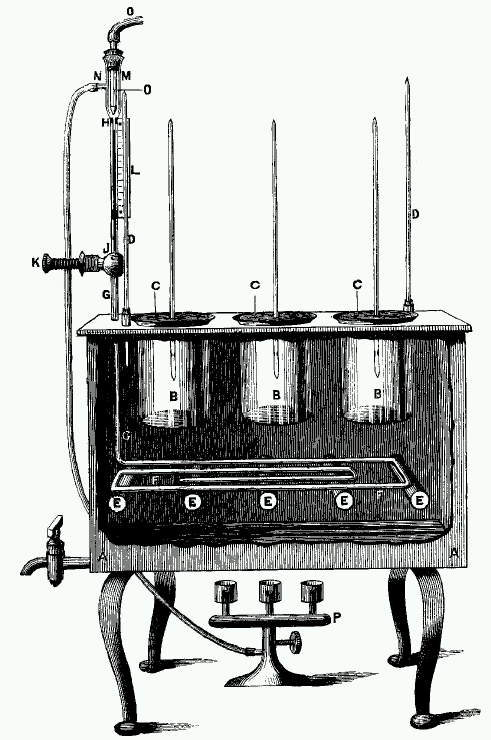Evolution in a Test Tube
Today, evolution in a test tube. The University of Houston presents this program about the machines that make our civilization run, and the people whose ingenuity created them.
The amazing variety of life on this planet is a product of evolution. However, it took billions of years for sharks, chimps and magnolia to evolve from their common ancestor. Given that evolution operates on such an enormous timescale, how could we possibly study it in a laboratory? Human life just seems too short.

William Henry Dallinger. Photo Credit:Wikimedia Commons/Wellcome Images
But not all evolution is slow. Within our lifetime bacteria have evolved defenses against our most powerful antibiotics. Bacteria that are not killed by antibiotics can prosper. They give rise to new resistant generations, rendering our weapons useless. This type of evolution can occur within days, and if we don't discover new drugs, the resulting antibiotic resistance may end up costing millions of lives by the middle of this century.
But can we control how organisms evolve? Our ancestors have done this to suit their own needs: dogs and wheat are, in their current form, a result of evolution that humans have been steering.
Scientists have tried to do this more deliberately. Perhaps the first was the Reverend William Dallinger. Just over 20 years after Darwin published his theory of evolution, Reverend Dallinger examined whether single celled organisms could adapt to slow changes in their environment. He started with an incubator filled with microbes that could initially only survive at room temperature. Over six years, the Reverend slowly increased the temperature inside the incubator to 158 degrees F to see whether the mi-crobes would adapt.

Professor Tim Cooper Photo Credit: University of Houston
More recent versions of this experiment are being carried out by many scientists, including Tim Cooper at the University of Houston, and Richard Lenski at Michigan State University. In 1988, Lenski started growing bacteria giving them just enough food to survive from day to day. He has been observing 12 different lines of bacteria ever since. Since then he has observed over 60,000 bacterial generations, equivalent to about 1,500,000 human years — longer than our species has been around.

Professor Richard Lenski. Photo Credit: G.L. Kohuth/Michigan State University
The results of this experiment are giving extraordinary insights into how life changes and adapts. The 12 different lines of bacteria have all evolved to thrive on their meager diets. Looking at their genes reveals that they have often used the same tricks — the same mutations — to achieve this. But in one line something unexpected happened. The bacteria started feeding in a completely new way, a change similar to us evolving the ability to eat wood.

Dallinger's Incubator. Photo Credit: Wikimedia Commons
So the churn of mutations, and transfer of genes, keeps creating variants of organisms that have never before existed. Most quickly disappear. A few succeed and create offspring that inherit their parents' characteristics. And so — as Darwin wrote at the end of his Origin of Species — "from so simple a beginning endless forms most beautiful and most wonderful have been, and are being, evolved."
This is Krešimir Josić at the University of Houston where we are interested in the way inventive minds work.
(Theme music)
Many thanks to Tim Cooper who has helped write this episode. You can visit his webpage for more information about his work.
We have become so used to antibiotics that it is hard to imagine what medicine would look like without them. Antibiotics are not only used to treat infections, but also make many other medical treatments possible by preventing infections in the first place. Here evolution works against us, medicine without antibiotics will look very different indeed
Here are more details about how Reverend Dallinger, a devout Methodist, came to accept evolution.
This episode was first aired on March 13, 2015